May 21, 2025 | 14:57 GMT +7
May 21, 2025 | 14:57 GMT +7
Hotline: 0913.378.918
May 21, 2025 | 14:57 GMT +7
Hotline: 0913.378.918
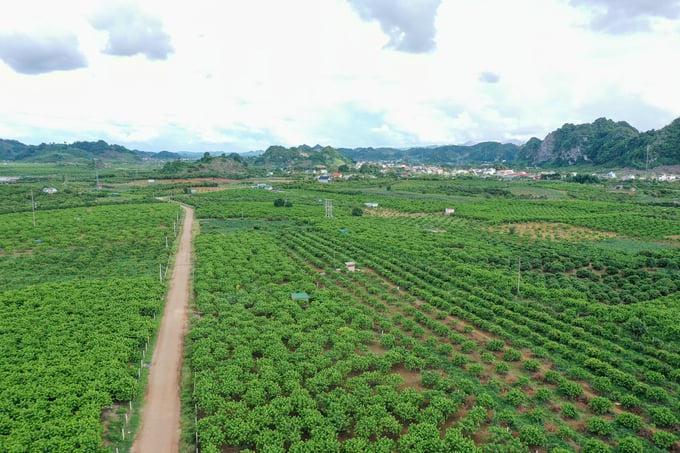
Endless rows of custard apples stretch across the flat plateau of Mai Son district. Photo: Tung Dinh.
Connecting Moc Chau and Yen Chau with Son La city, Mai Son embraces National Highway 6 with its diverse, intertwined terrains. This district boasts flat plateaus and rolling hills, all lush and rich with fruit trees.
Descending from Chieng Dong Pass, villages and towns are interconnected and interspersed with vast fruit-growing areas. This reveals Mai Son's new vitality and the successes of agricultural restructuring in recent years.
Hidden behind the rows of spacious houses along Highway 6 are the fruit fields on the flat plateau of Mai Son. Higher up are coffee, sugarcane, cassava, and other crops that have transformed people's lives in this mountainous district.
Due to the diverse terrains and microclimates, Mai Son farmers always choose the most suitable crops for their areas.
Co Noi is the southernmost commune of Mai Son district, bordering Yen Chau. In the past, the flat areas of Co Noi primarily grew corn, sugarcane, and soybeans. When a policy to shift the crop structure was introduced, various crops were planted, turning this fertile land into a mixed garden.
Eventually, custard apples were introduced to Co Noi. Through natural selection, other plants gradually gave way to custard apples.
But achieving today's success, where each hectare of custard apples can yield a profit of 400-500 million VND, equivalent to around 1 billion VND in revenue for farmers, has been complex.
When custard apples first appeared in Co Noi, they were primarily a local variety brought back by people who studied in Dong Trieu (Quang Ninh). Although these trees grew well and were well-suited to the local soil, their economic value needed to be higher. It wasn't until the Queen custard apple (Thai custard apple) variety began to bear fruit that custard apple billionaires in Mai Son emerged.

Thai custard apples are grafted onto Vietnamese apple roots and planted in neat rows. Photo: Tung Dinh.
More than 10 years ago, after traveling to the South to learn, Loc bought 50 grafted Thai custard apples to experiment with. Due to limited experience and poor techniques, that year's custard apple season yielded only two fruits from the 50 trees.
Undeterred, the young man, born in 1990, continued to learn and absorb the experience of his predecessors, expanding his Thai custard apple plantation. Upon reaching 2,000 Thai custard apple trees, Loc's output reached 2 tons of fruit, which sold at a reasonable price of 80,000-100,000 VND/kg.
Following Loc's success with Thai custard apples, people in the commune and district started to follow suit, first testing on small areas and then expanding. Mai Son farmers learned from Loc how to graft, care for, harvest, and even cover the fruit to increase the quality of custard apples.
Economically, Thai custard apples can be twice as valuable as Vietnamese ones, with revenue per hectare at peak times reaching approximately 1 billion VND. After deducting all expenses, the profit is 400-500 million VND/ha.
The reason for this is that, in addition to their high quality, Thai custard apples yield significantly higher than Vietnamese custard apples. "In the 7th and 8th years, which is the main business stage, Vietnamese custard apples yield about 8-9 tons/ha, while Thai custard apples can yield up to 15 tons," Ms. Nguyen Thi Lan added.
To date, Thai custard apples have been firmly established in Mai Son for about seven years, following many changes and experiments in crop structure. Custard apple billionaires like Loc have gradually increased in number, the market has become increasingly stable, and the fruits are shipped downstream after harvest.
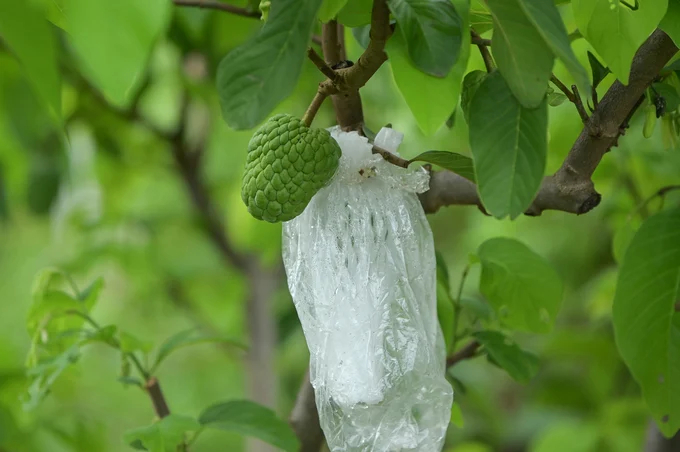
Loc uses up to 1 ton of bags at peak times to cover his custard apple acreage. Photo: Tung Dinh.
"There was a case where Mr. Loc used up 1 ton of bags to cover the fruit," said a district agricultural officer about the "huge" output of custard apples at Bao Khanh Construction and Agriculture Cooperative.
After more than 10 years, only the base of the indigenous seed survived in Mai Son; the top has become the Thai custard apple tree. Corn and sugarcane have gradually become memories of the old days of famine for Mai Son farmers. Recently, a new variety of durian custard apple has been introduced to Mai Son, also grafted onto the indigenous custard apple tree root.
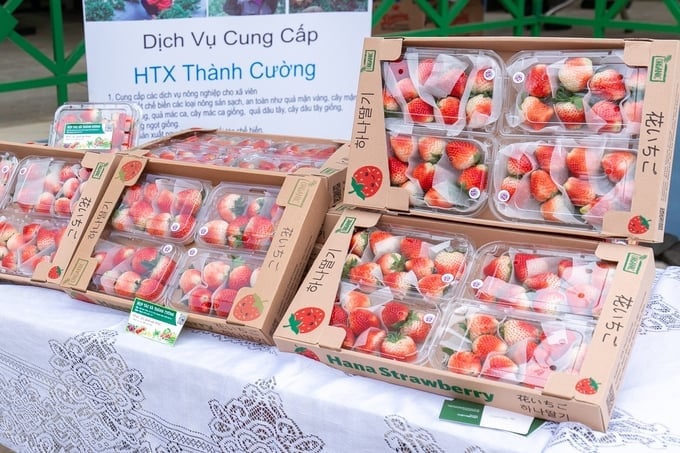
Strawberry trees have become billion-dollar trees for Mai Son farmers. Photo: Tung Dinh.
Strawberries are everywhere in the flat areas, but on the hillsides of Mai Son, they are gradually asserting their position. When mentioning Son La strawberries, many people think of Moc Chau, but the true capital of this valuable fruit is Mai Son, where the total area is more than 450 hectares, compared to only about 130 hectares in Moc Chau.
“In the past, this hill was full of corn silk, but now it’s all strawberries,” said Nguyen Dinh Lam, Director of Tan Thao Cooperative, jokingly in his old Ha Tay accent. Lam shared that his parents were originally from Ha Tay and came to Son La for new economic development. He was born, raised, and started a business in this fertile land.
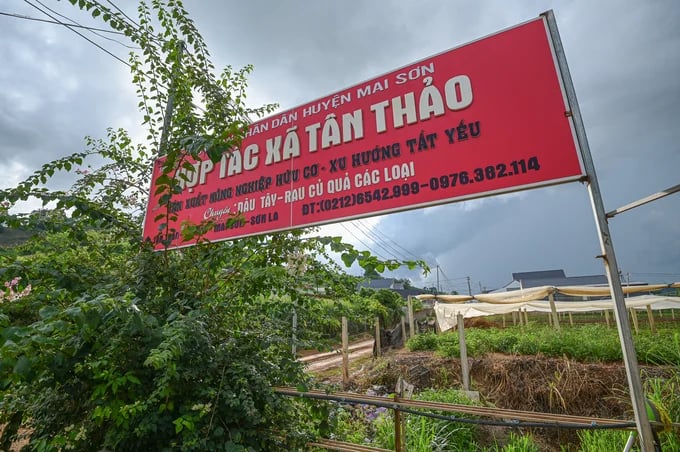
Tan Thao Cooperative follows a policy of developing organic agriculture. Photo: Tung Dinh.
Some people in Co Noi brought strawberries back from Da Lat for trial planting. They encouraged each other to expand the area because the soil was suitable. In the 2019-2020 crop year, Mai Son strawberries peaked with a good harvest and reasonable prices. In the following years, prices decreased but remained stable, bringing in billions of dong per hectare.
The Mai Son district has more than 450 hectares of strawberries, with the Co Noi commune alone having 400 hectares, including nearly 100 hectares in Tan Thao village. "The whole village has 176 households, of which 170 households grow strawberries; the rest either have no land or are elderly and unable to farm," said Mr. Lam, adding that Tan Thao Cooperative currently has 15 members with a total strawberry-growing area of 30 hectares.
Established on May 3, 2017, Mr. Lam is both the director and deputy director of Tan Thao Cooperative. Not only does he produce and conduct business himself, but he also helps villagers become familiar with and prosper from strawberry cultivation.
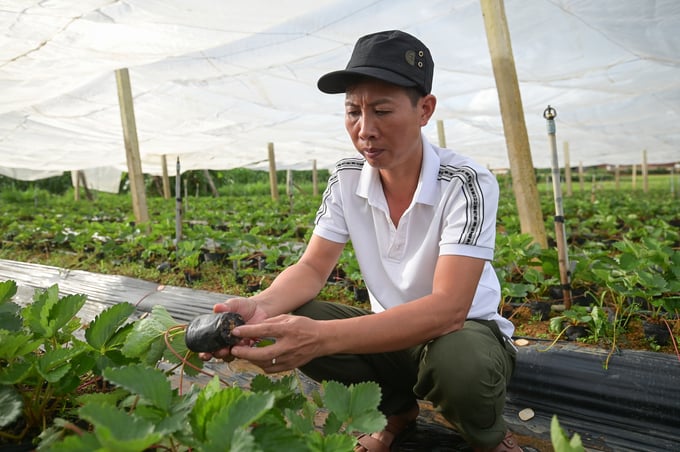
Mr. Nguyen Dinh Lam, Director of Tan Thao Cooperative, introduces the strawberry breeding process. Photo: Tung Dinh.
Currently, strawberry farmers in Co Noi sell seeds and fruits, and their work spans the entire year with almost no breaks. According to Mr. Lam, the fruiting process lasts from September this year to March next year, while the remaining time is spent on seeding.
This strawberry variety is partly purchased from Da Lat and partly propagated from existing plants in the garden to ensure the quality and yield of the seedlings. The farmers keep the strawberry variety produced for their own use and sell it to other farmers in the area.
During the breeding period, the cultivated area is narrowed, and people use strawberry fields to grow short-term vegetables such as melons, squash, and eggplants, supplying clean vegetable stores in Hanoi. This both improves the land and maximizes its value.
“If you have good skills and techniques, you can harvest 14-15 tons of fruit or more per hectare. Some people can even harvest up to 18 tons of fruit on only 7,000 square meters,” said Mr. Lam.
In 2023, 1 hectare of strawberries brought in a profit of 600 million VND for the Director of Tan Thao Cooperative, with revenue approximating 1 billion VND. Previously, in the 2019-2020 strawberry crop, when the season was good and prices were favorable, 1 hectare of strawberries earned 1 billion VND in profit.
Currently, strawberries in Co Noi are mainly sold to Hanoi and consumed online through e-commerce platforms. Regarding the tourism business, strawberry production cooperatives are also starting to deploy, though they are yet to be on a systematic or large scale. This is also the desire of Mr. Lam and many people in Tan Thao village, hoping to sell strawberries directly to tourists visiting the gardens soon.
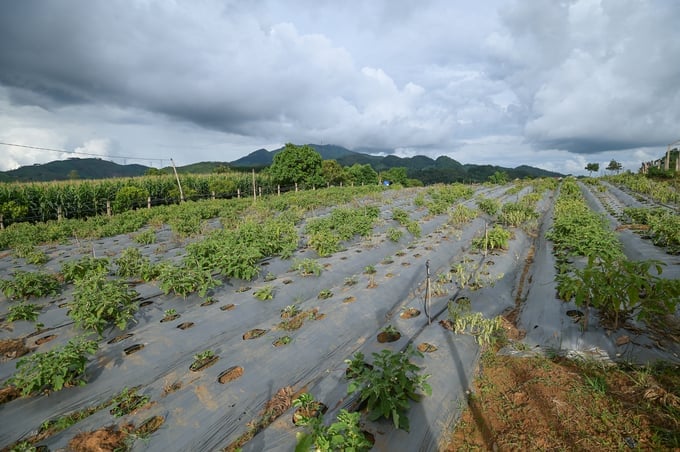
After the season, strawberry-growing land grows short-term vegetables, improving the soil and maximizing its value. Photo: Tung Dinh.
According to Mai Son district's report, the district's agricultural sector continues to shift firmly towards commodity production and high-tech application.
The whole district has 11,200 hectares of fruit trees of all kinds, 4,201 hectares of which are grown using high technology and 1,800 hectares of which are grown using organic methods. Good Agricultural Practices (VietGAP) are implemented on an area of 1,119 hectares.
To date, the Provincial People's Committee has recognized the district as having three high-tech agricultural zones, with a total area of 1,373.7 hectares and 1,726 households participating in production linkages within these zones.
With the above area of 11,200 hectares, the district's fruit tree output in 2024 is estimated at 14,294.7 tons, an increase of 44.5% compared to 2023, with a total estimated value of 585,106 billion VND.
This increase is because the strawberry growing area in the 2023-2024 crop year increased by nearly 120 hectares compared to the 2022-2023 crop year. Additionally, the harvested area of some crops, such as plums and dragon fruit, increased, and the prices of some fruits improved, being about 3,000-5,000 VND/kg higher than in 2023.
Translated by Quynh Chi

(VAN) Facing the threat of rabies spreading to the community, Gia Lai province urgently carries out measures to vaccinate dogs and cats on a large scale.

(VAN) Disease-free livestock farming not only protects livestock herds but also stabilizes production and livelihoods for many farmers in Tuyen Quang.

(VAN) Japan's grant aid project contributes to capacity building, promoting organic agricultural production, and fostering sustainable community development in Dong Thap province.
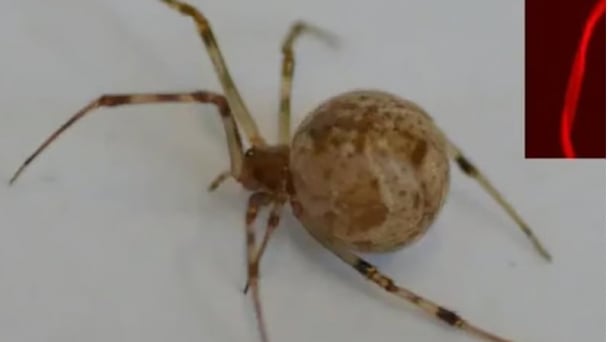
(VAN) For years, the CRISPR-Cas9 genome technology has been reshaping genetic engineering, a precision tool to transform everything from agriculture to medicine.
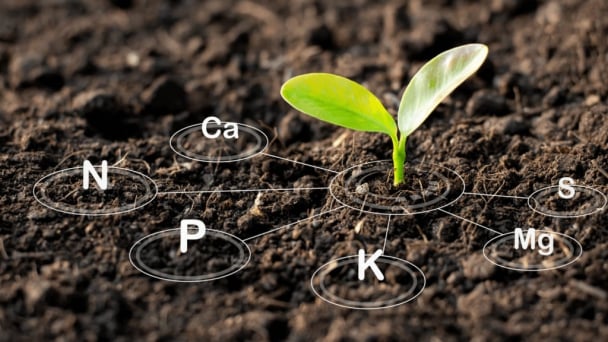
(VAN) Vietnam aims to become a 'leader' in the region in the capacity and managing effectively soil health and crop nutrition.
![Reducing emissions from rice fields: [Part 1] Farming clean rice together](https://t.ex-cdn.com/nongnghiepmoitruong.vn/608w/files/news/2025/05/05/z6509661417740_a647202949c539012a959e841c03e1d3-nongnghiep-143611.jpg)
(VAN) Growing clean rice helps reduce environmental pollution while increasing income, allowing farmers to feel secure in production and remain committed to their fields for the long term.
/2025/05/19/5136-1-144800_230.jpg)
(VAN) The Nghe An Provincial People's Committee has just approved the list of beneficiaries eligible for revenue from the Emission Reductions Payment Agreement (ERPA) in the North Central region for the year 2025.